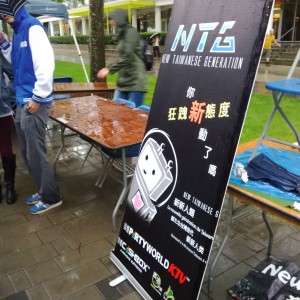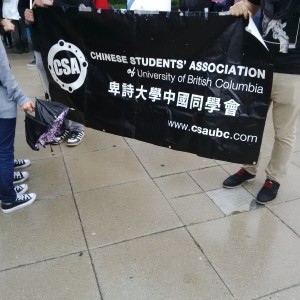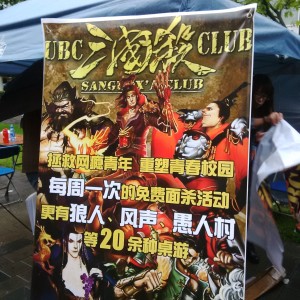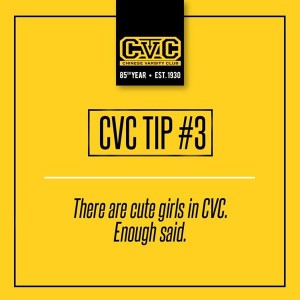At the beginning of the school term, I attended an orientation event at the Place Vanier first-year residence where one of my old high school acquaintances, Steven, was staying. This was a casual meet-and-greet organized by the local residents association, intended to allow new residents of each pair of “sister” houses to get to know each other. The particular pair of houses that my friend was a part of were gender segregated, where he and his all-male house was matched with another all-female house. In many ways, this was a typical introductory event – it was held outdoors in fair weather, background music was playing, and some complimentary beverages were provided by the residents association. Yet its workaday appearance in no way made it exempt from being a site for the enactment of a plethora of social patterns and scripts. In a conversation I had with a group of four male first-year students, I witnessed firsthand two interrelated patterns of socialization that were employed as a topic of conversation and as a bonding tool – compulsory heterosexuality and sexual essentialism.
In order to make sense of some of my observations and explain these two concepts, I will be drawing upon chapter four of Mariana Valverde’s Sex, Power and Pleasure. Here, she explains her ideas on how the “cultural myth” of sexual essentialism obstructs our understanding of the fluidity of sexual identities and the existence of bisexuality (111). She also gives an overview of Adrienne Rich’s concept of compulsory heterosexuality (114). These will form the conceptual backbone for my interpretation of my experience conversing with the four young men. Incidentally, these students were all fluent in English, having spent most if not all of their lives either in Canada or the United States. Three of them appeared to be Caucasian and the one that appeared to be Asian identified as an ethnic Korean. My analysis, based on notes that I took after attending this orientation, will be focused on how the micro-interaction that occurred was a specific expression of the constructs that Valverde and Rich identify as well as an illustration of how their theories are interrelated. I suggest that these theorists allow us to see the short conversation that I witnessed as a microcosmic part of wider patterns that circulate throughout society.
The interaction that is the subject of this blogpost began after we had all introduced ourselves and engaged in quite a bit of small talk regarding our backgrounds, faculties, and interests. During a momentary lull in the conversation, Stan (all the names used in this post are pseudonyms), one of the Caucasian students, asked the group whether we had “[liked] what we had seen so far” accompanied by a suggestive smirk. When the rest of the group answered in a generally noncommittal fashion, he followed up by saying, “Oh come on, you can’t tell me you guys don’t think she’s hot”, gesturing surreptitiously to a girl nearby. Jokingly, he added, “I mean, you’d have to be dead.” While this elicited tentative expressions of approval from the other guys in the group, I responded truthfully that I disagreed and that I was “not straight.” At this, Stan replied, “Oh well, if you’re gay, that’s different.”
While this was a short, casual piece of conversation – it took less than a minute and the subject was not brought up again – it is a great example of how individual, seemingly insignificant interactions are informed by social patterns. Stan’s comments on the attractiveness of the girls of the residence sister-house are informed by his partial understanding of the social structure that Rich identifies as “compulsory heterosexuality”. As Valverde explains, this concept describes how society presents heterosexuality “as the norm”, as a universal experience shared by everybody except for those labeled and punished as deviants (114). The social forces that make heterosexuality compulsory also make it appear “natural” (114). When Stan asked us whether we found any of the girls at the event attractive, he was relying upon the implicit assumption that as “naturally” heterosexual young men, we were bound to do so. When our response did not “live up” to this premise, he appealed further to social norms by referring to a stereotypically good-looking (from a heterosexual perspective) female student. By adding that we would “have to be dead” to disagree, Stan continued to draw upon his partial understanding of compulsory heterosexuality by implying that as young men, we had no choice but to be allured by an archetypal example of the heterosexist standard of female beauty.
Interestingly enough, despite my expressed deviance from compulsory heterosexuality in my refusal to deem the girl in question as attractive and my identification as “not straight”, I was not socially “punished” in the classic sense (114). This is most likely due to the increasing social and institutional acceptance of homosexuality that has occurred in Canada and more generally amongst Western countries since Rich wrote in 1980. Still, I was positioned as outside “the norm” by Stan (“that’s different”) and as such subject to a minor degree of social awkwardness (judging by his expression and those of the others in the group). However, perhaps the most interesting part of his statement was his assumption that I am gay. In fact, based on the information that I provided (“I’m not straight”), the only logical conclusion that he could infer would be only that I am not heterosexual. His assumption that I could only be one of two sexualities – homo- or heterosexual – draws from another social pattern that is identified by Valverde as the cultural myth of “sexual essentialism” (117). This is assumption that, barring extremely rare exceptions, “everyone is “really”… either gay or straight” (111). As Valverde explains, this myth supposed “that we all have some inner core of sexual truth” which pre-determines our sexualities and precludes the possibility of fluidity and change (111). Ergo, given that I was not straight, sexual essentialism dictated that I must be gay.
Of course, in reality, there exists considerable fluidity in people’s lived experiences of sexuality, particularly amongst women (112). What is important to realize is that Stan’s reproduction of sexual essentialism has social consequences in that it participates in an erasure of actual sexual fluidity. Attitudes and actions informed by sexual essentialism make it difficult for fluid sexual identities (such as pansexuality, bisexuality, uncategorized sexual identities, etc.) to be recognized, understood, and accepted. Similarly, his heterosexist comments participate in an erasure of non-heterosexual identities. Resisting these conformist tendencies means that we have to recognize that even small, seemingly insignificant actions and words can contribute to discrimination. My goal for this post is not to simply illuminate an academically interesting relationship between theory and reality – it is to raise more awareness of the subtle ways in which inequality can function. Next time you encounter a situation that seems to make you or others uncomfortable, ask yourself if any sort of implicit discrimination may be occurring. Only by interrogating our common sense assumptions can we rid ourselves of inequality as a society.
References:
Valverde, Mariana. Sex, power and pleasure. Canadian Scholars’ Press, 1985.
Weblink: http://www.jstor.org/stable/4315933





